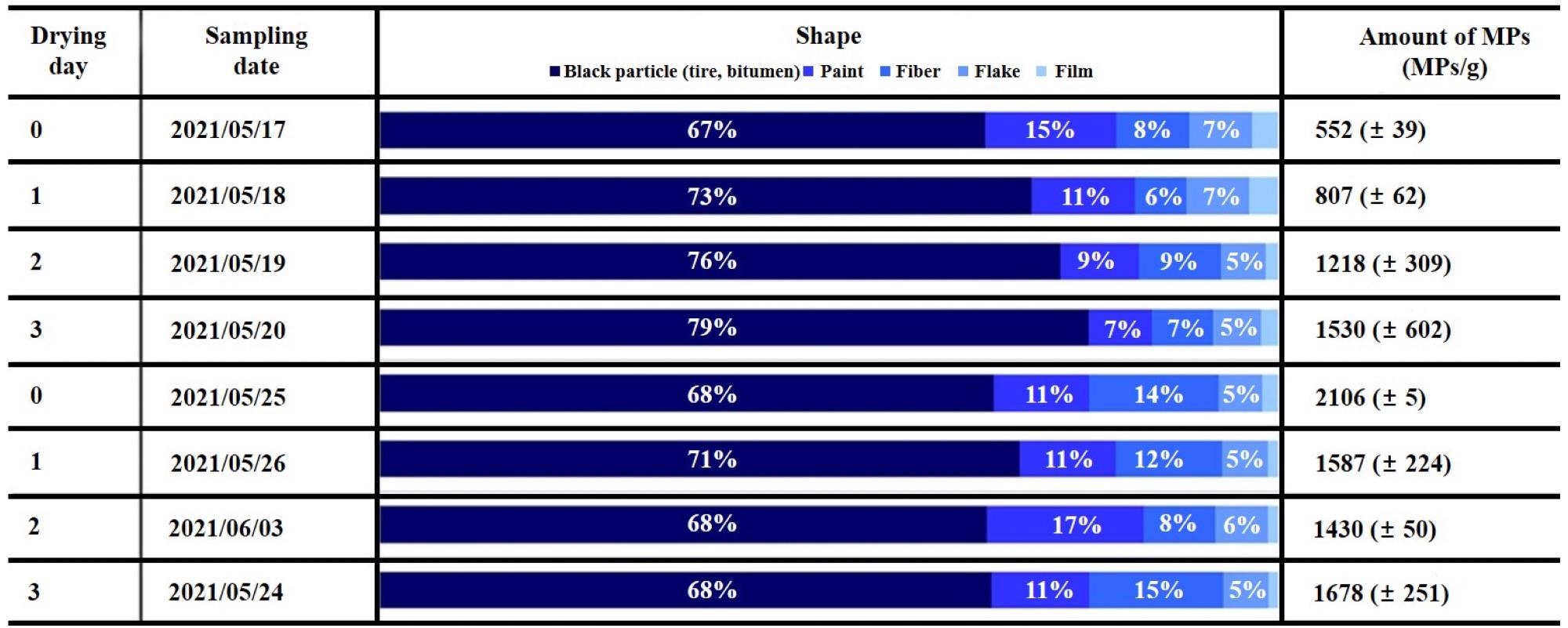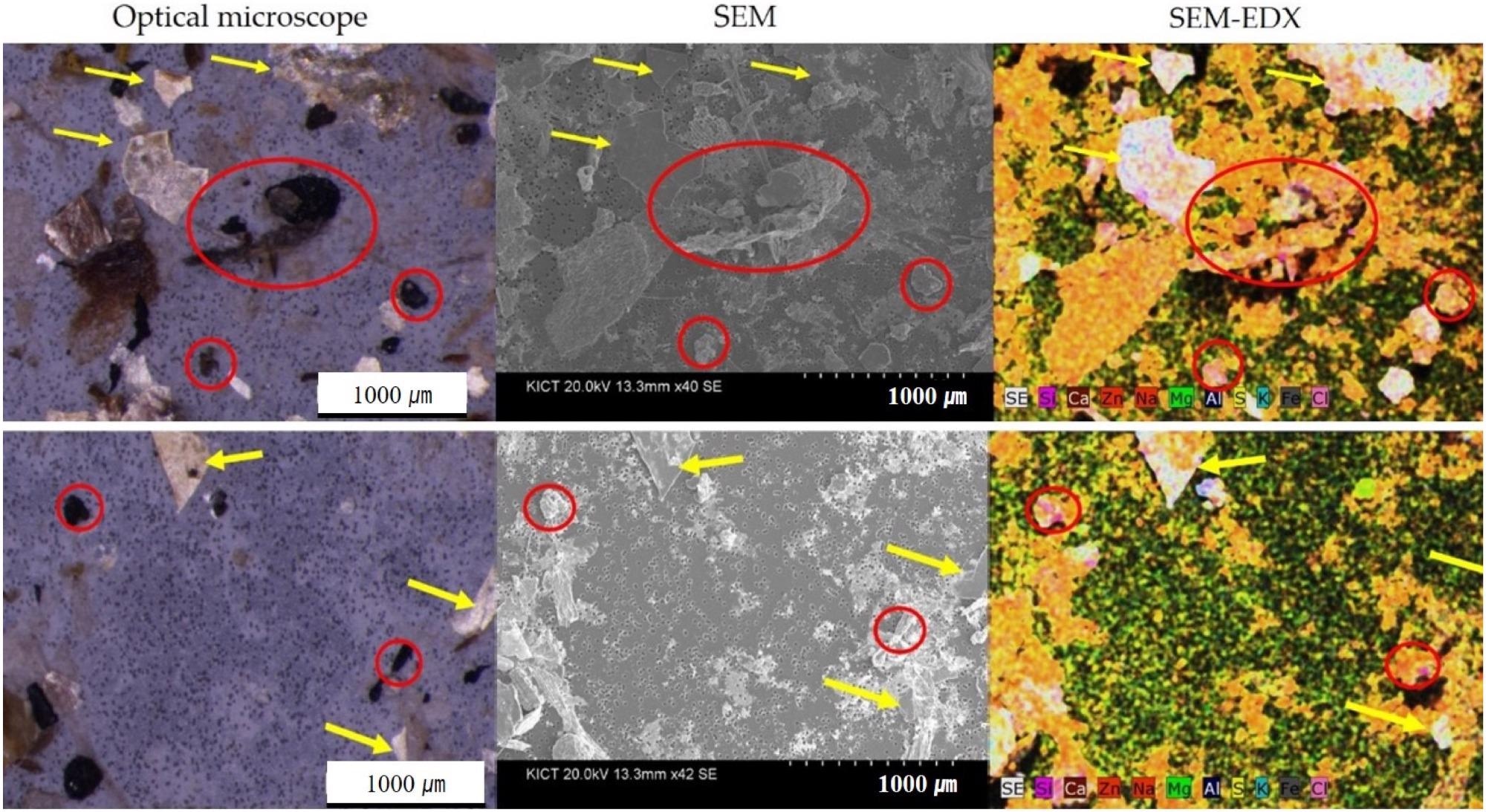Microplastics and microparticles are harmful pollutants that can cause health issues in city populations. In a new study, scientists have investigated the concentration of microplastics in road dust in Goyang city, South Korea. Their findings have been published online this week in the journal Sustainability.

Study: Concentration of Microplastics in Road Dust as a Function of the Drying Period—A Case Study in G City, Korea. Image Credit: martinho Smart/Shutterstock.com
Microplastics: A Pervasive Environmental Pollutant
Plastic is one of the 20th and 21st centuries' defining materials. It is used in almost all industrial sectors, from food packaging to electronics, construction, and the automotive industry. A staggering number of products are produced using plastic every year, and the scale of environmental pollution caused by the manufacture and everyday use of these materials is growing exponentially.
Microplastics are defined as particles under 5 mm in size. They are either intentionally manufactured or are generated from the degradation of plastic products. They have been detected in growing amounts in air, soil, cities, and water, posing a threat to human health and the environment. The long-term effects of microplastic accumulation are not fully understood, but it is widely agreed that their proliferation in the environment is cause for significant concern.
Sources of Microplastics
Microplastic sources are divided into two categories: Point and non-point sources. Point sources come from places such as industrial effluent runoffs and sewage treatment plants. Non-point sources come from farm, road, parking lot runoffs, and so forth. Two-thirds of the total microplastics in the environment come from non-point sources.
Normally, point sources can be controlled as they come from tightly regulated industrial activities. Non-point sources are more problematic as they cannot be properly controlled due to the overwhelming number of points of origin. Microplastics from non-point sources can enter aquatic environments due to factors such as waste mismanagement, rainfall, snow dumping, and road runoff.
Road dust is a main non-point source of microplastics. Rapid expansion of urban areas and their supporting infrastructure, as well as the growth in numbers of vehicles on the road globally have contributed to the proliferation of road dust. Microplastics in road dust mainly originate from sources such as car tires, road paint, and bituminous materials. Different plastics are utilized in these sources, such as styrene-butadene-styrene, polyacrylate, ethylene-vinyl-acetate, and styrene butadiene rubber.
The scale of the problem has led researchers in many countries including India, Vietnam, Iran, and Japan, to study the microplastics contained in road dust. Numerous studies have used particle quantification to investigate the contamination status of road dust, and studies have concluded that 90-95% of microplastics are expected to enter the environment due to rainfall runoff. Due to their accumulation in sediments, they are difficult to treat once in the environment, facilitating the need to deal with microplastics before rainfall washes them away.

Microplastic (MP) concentrations by sampling date. Image Credit: Kang, H et al., Sustainability
The Research
The authors of the research have used a case study in Goyang city, South Korea, to test their hypothesis that microplastics on roads would accumulate over time during a drying period. They aimed to find a correlation between the amount of microplastics on roads and the drying period. Additionally, the researchers investigated the morphology and chemical composition of microplastics in samples.
Samples were collected from the roadside in a downtown area that had high traffic density during rush hours which is cleaned once a week with a road sweeper. The road itself had eight lanes (four in each direction.) Annual average traffic density at the site chosen for the sample is 24,027 vehicles per day with an average driving speed of 60 km per hour.

Optical microscope and SEM/EDX mapping of particles of road dust sample (red circle: black particle, yellow arrow: soil and stone). Image Credit: Kang, H et al., Sustainability
Samples were taken between May 17th and June 2nd, 2021. Samples were taken on different days and 6 hours after any rainfall. Samples were collected by brushing and then sifted to remove any large objects and then stored in sterile tubes to be transported to the laboratory. The samples were collected at the same time and the drying period was recorded.
Samples were pre-treated, sieved, filtered, and dried. The numbers, shapes, and sizes of microplastics were examined using a stereoscopic microscope. Particle morphologies were analyzed with SEM and energy dispersive X-ray spectroscopy. Additionally, FTIR was used to analyze the particles and to identify tire components, Raman spectroscopy was used to perform measurements.
Experimental and analytical results indicated that microplastic concentration was related to the length of the drying period. At 0 days, low amounts of microplastics were detected due to rainfall washing them away, and concentration increased after a longer time.
Morphological analysis revealed that black particles (assumed to be from tires and bitumen) contributed the highest proportion of microplastics at 67-97%, followed by paint, fiber, flakes, and film materials. However, it was difficult to correlate the detected shape ratio and the microplastic concentration or drying period.
A limitation of the study identified by the authors is that tires do not generally reflect light by material and color, so measuring components by FTIR and Raman spectroscopy is difficult. Therefore, it could not be adequately concluded whether the black particles which made up the majority of microplastics were from tires or bitumen. Additionally, the authors have stated that future studies should estimate microplastic flow into the environment caused by stormwater.
Further Reading
Kang, H et al. (2022) Concentration of Microplastics in Road Dust as a Function of the Drying Period—A Case Study in G City, Korea [online] Sustainability 14(5) 3006 | mdpi.com. Available at: https://www.mdpi.com/2071-1050/14/5/3006
Disclaimer: The views expressed here are those of the author expressed in their private capacity and do not necessarily represent the views of AZoM.com Limited T/A AZoNetwork the owner and operator of this website. This disclaimer forms part of the Terms and conditions of use of this website.